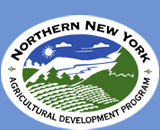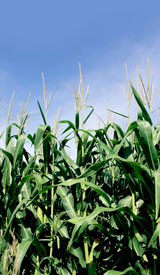May 21, 2009
Contacts: Amy Ivy, Cornell Cooperative Extension of Clinton County,
518-561-7450
@Cornell University: Elson Shields, 607-255-8428; Donald R. Viands,
607-255-3081
Eric Bever, Certified Crop Consultant, 518-643-2360, cell: 518-572-8767
New Infestation of Alfalfa Pest Found in Northern NY
Peru, NY (May 21, 2009) - A new Alfalfa Snout Beetle (ASB) infestation
has been found on a farm north of Peru, NY, not far from the site of the
discovery of the invasive insect pest in 1992, says Cornell University
entomologist Dr. Elson Shields.
In the fall of 2008, an infestation of Alfalfa Snout Beetle was found
north of Plattsburgh in fields near Lake Champlain.
The Northern New York Agricultural Development Program, Cornell
University Agricultural Experiment Station, and New York Farm Viability
Institute are funding the research taking place on privately-owned farms
and at the region’s E.V. Baker Agricultural Research Farm in Willsboro
and W.H. Miner Agricultural Institute in Chazy.
Shields is part of a Cornell University research team developing two
promising biological controls for the pest that destroys alfalfa, a
valuable feed crop for dairy cows and other livestock.
Shields has successfully applied nematodes to fields with Alfalfa Snout
Beetle. The microscopic worms eat the insect’s larvae, thereby reducing
the populations of the pest that eats the alfalfa plant roots.
Shields is now developing a cost-effective method for farmers to “grow”
and apply their own nematodes to control ASB.
“We think the protocol for using nematodes will require only one
inoculation per field with farm-grown persistent nematode strains to
reduce the snout beetle population on a farm. The nematodes in
combination with planting ASB-resistant alfalfa varieties may just be
the long-term biological solution the region’s farmers need,” Shields
says.
Since 1998, Cornell University plant breeder Dr. Donald R. Viands has
been selectively breeding Alfalfa Snout Beetle-resistant varieties of
alfalfa.
Fifth- and sixth-cycle selections of ASB-resistant varieties grown in
Cornell greenhouses from native New York and Hungarian varieties of
alfalfa are now being evaluated in field trials on farms in Northern New
York.
Viands says, “We have seen promising trends of less and less root damage
on the greenhouse-grown alfalfa and are eager to see how well the
experimental plant populations showing the greatest potential for
resistance perform on the farms.”
Certified Crop Advisor Eric Bever says he has been reporting increased
signs of winterkill in the alfalfa crops in the Peru and Plattsburgh
area of Northern New York in Clinton County.
Bever says, “What looks like winterkill in alfalfa can be a sign of both
root diseases of the crop and damage caused by Alfalfa Snout Beetle. It
is important for farmers to know as soon as possible if ASB exists in
their fields and to know that control methods are becoming more and more
available to them.”
Cornell Cooperative Extension of Clinton County Executive Director Amy
Ivy says, “Our farmers can take heart from the two-pronged approach to
reduce the populations of ASB and grow ASB-resistant alfalfa. The
efforts by Cornell researchers to combat this problem are now benefiting
North Country farms.”
The Northern New York Agricultural Development Program includes fact
sheets on the ASB’s history, life cycle and control treatment
developments on its website at www.nnyagdev.org. #
ASB STATISTICS
• Surveys funded by the Northern New York Agricultural Development
Program show ASB to be present in all six NNY counties: Clinton, Essex,
Franklin, Jefferson, Lewis, and St. Lawrence. ASB is also found in
Cayuga, Wayne and Oswego counties, and southeastern Ontario.
• ASB is known to exist on approximately 13 percent of NY’s agricultural
land.
• The adult ASB is about as long as a human thumbnail with a tough gray
shell.
• The adult ASB is wingless and migrates by walking, often causing large
dark moving masses along rural roadsides. ASB also spreads by traveling
on trucks and farm equipment.
• ASB is believed to have first arrived in the U.S. in the ballast of
sailing ships arriving in Oswego in the 1800s.
Funding the Research
The research to develop control methods for Alfalfa Snout Beetle is
funded by the Northern New York Agricultural Development Program,
Cornell University Agricultural Experiment Station, and New York Farm
Viability Institute. Tom Sleight, executive director of the NY Farm
Viability Institute, says, “The New York Farm Viability Institute
funding for this project reflects concerns we heard from New York
farmers. The alfalfa snout beetle can devastate fields, and we are
interested in solutions to controlling this pest, and making sure the
problem does not spread deeper into the state.’’
For More Info: www.nnyagdev.org # # #



